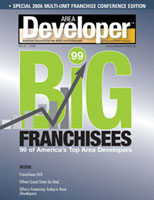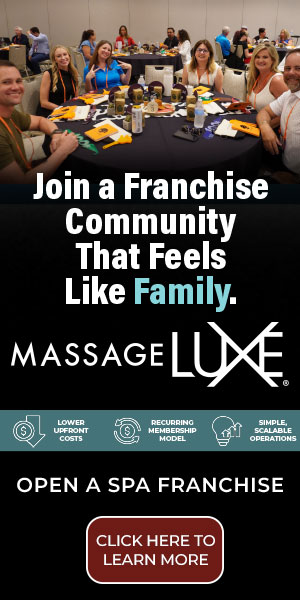Calculating ROI in Franchising
When looking at a franchise opportunity, the big question often asked is 'how much can I make?' Coming up with those projections isn't always easy. It takes a little digging on your part. Even so, most area developers have enough experience and are wise enough to know how to find the best franchise opportunities that will reap a good return on investment (ROI).
As with any investment, you want to carefully investigate a franchise company's potential ROI. It is important to remember that a franchise purchase involves investments of both time and money, and investors should expect more than they would from a passive investment like the stock market, says Steve Hockett, president of FranChoice. Based in Eden Prairie, Minnesota, FranChoice helps identify a franchise opportunity that best meets the criteria of those wishing to invest in one.
If a good return for a passive investment is an annual 10 to 15 percent, you will want to see an even greater return with a franchise opportunity. How much money you can make in a franchise depends on many factors, from the structure of the franchise (retail versus service) to how long your franchise has been operational, to how well you understand and embrace the system, to your enthusiasm for the business and how it will help you realize your dream.
While it may seem that calculating the ROI shouldn't be all that difficult, the Federal Trade Commission has requirements on how earnings statements can be presented to prospective franchisees. The FTC asks franchisors to present these expectations in writing in the UFOC. In addition, the agency requires that this information is accurate and substantiated. Franchisors can face severe penalties if they attempt to misrepresent earnings.
Reach Out
Despite some of these hurdles are there ways to make projections on what your ROI is likely to be? Perhaps the most important first step is to check with other franchisees that are doing what you hope to do. Then you can start making earnings projections based on what you learn from your own personal research. It is important to remember that Item 20 on the UFOC provides a list of current and former franchisees along with their contact information. Even if the geographic area of the franchisees is different from yours, at least you are gaining some performance thresholds you can use as a guide.
Call a number of these franchisees and be sure to have a list of questions ready, including those involving financial performance and operating costs, says Hockett. If you've done your research well, you should have some idea of both the high and low end of the range. It is important to keep in mind that the location or territory you are considering may only perform in the average range. When you are talking with other franchisees, ask what the average earnings of a unit is during the first three years of business. If the business is failing to make returns by the third year, you may want to continue shopping for something that you think will perform better
"While it's possible to make projections based on what others have accomplished, there is still an element of risk that you have to accept as you go into this," says Hockett. "There is no guarantee that you are going to reach your projections or that you won't exceed them," he adds.
Other Yardsticks to Use
While your individual research is invaluable, don't neglect some other steps that may prove fruitful. Hockett recommends looking for a franchise that has great management leverage opportunities to maximize the return on your personal assets of time and talents. These are often franchises with total investments of less than $200,000 and in some cases less than $50,000. Remember that higher franchise investment does not necessarily mean a higher rate of return. Again do what you can to uncover the average earnings of a typical unit during the first three years of operation. This information may be available by reviewing the franchise company's UFOC and focusing on Item 7, which details the investment required, and Item 19, which discusses the earnings of locations within the franchise system. Since Item 19 is optional, it may not be possible to get these details. But if you are able to zero in on this information, it is then possible to project the average three-to-five year returns on investment.
Boosting Your ROI
Once you've determined ROI, you may want to look ahead to potential growth opportunities. For example, a common element for increasing ROI is to use leverage to boost the return. Generally, leverage relates to using financial capital to secure loans, to invest more, and to earn more as long as your debt service is less than the increase in income.
Finding a high quality franchise system that provides an opportunity to invest your time and money is a major factor in trying to unlock leverage. In fact, Hockett points out that systems exist where a very successful operator can generate returns greater than the total initial franchise investment within a short period of time.
In addition, some franchise owners who are already successfully running a franchise concept can use some of their existing expertise to expand to another similar franchise concept, says Marvin Storm, CEO of Navis Logistic Network and chairman of Blackstone Hathaway.
"You have already invested the money and have people on staff that will be able to shift from one concept to another," he explains. You want to find other concepts to redeploy your expertise and personnel. In this w ay, your initial investment will be lower and the time it takes to get a return on investment will be shorter, he adds.
Hockett agrees with Storm's assessment. "If your franchise agreements allow you to branch out into other concepts, it is possible to clearly leverage your existing expertise across more units or different brands and increase the ROI for both brands."
Investors won't ever know exactly how much they can make when they get into a franchise opportunity. The proof will be in the pudding. Says Hockett: "They have to do the work and then make that determination."
For more information on FranChoice, go to www.franchoice.com
Share this Feature
Recommended Reading:
FRANCHISE TOPICS
- Multi-Unit Franchising
- Get Started in Franchising
- Franchise Growth
- Franchise Operations
- Open New Units
- Franchise Leadership
- Franchise Marketing
- Technology
- Franchise Law
- Franchise Awards
- Franchise Rankings
- Franchise Trends
- Franchise Development
- Featured Franchise Stories
FEATURED IN

Multi-Unit Franchisee Magazine: Issue 1, 2006

$65,000
$1,000,000





 The multi-unit franchise opportunities listed above are not related to or endorsed by Multi-Unit Franchisee or Franchise Update Media Group. We are not engaged in, supporting, or endorsing any specific franchise, business opportunity, company or individual. No statement in this site is to be construed as a recommendation. We encourage prospective franchise buyers to perform extensive due diligence when considering a franchise opportunity.
The multi-unit franchise opportunities listed above are not related to or endorsed by Multi-Unit Franchisee or Franchise Update Media Group. We are not engaged in, supporting, or endorsing any specific franchise, business opportunity, company or individual. No statement in this site is to be construed as a recommendation. We encourage prospective franchise buyers to perform extensive due diligence when considering a franchise opportunity.